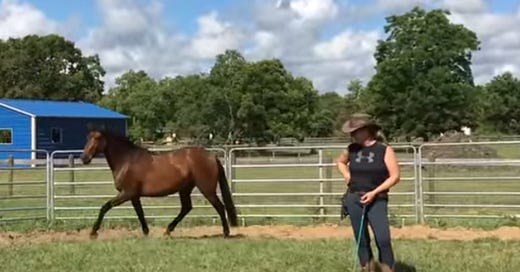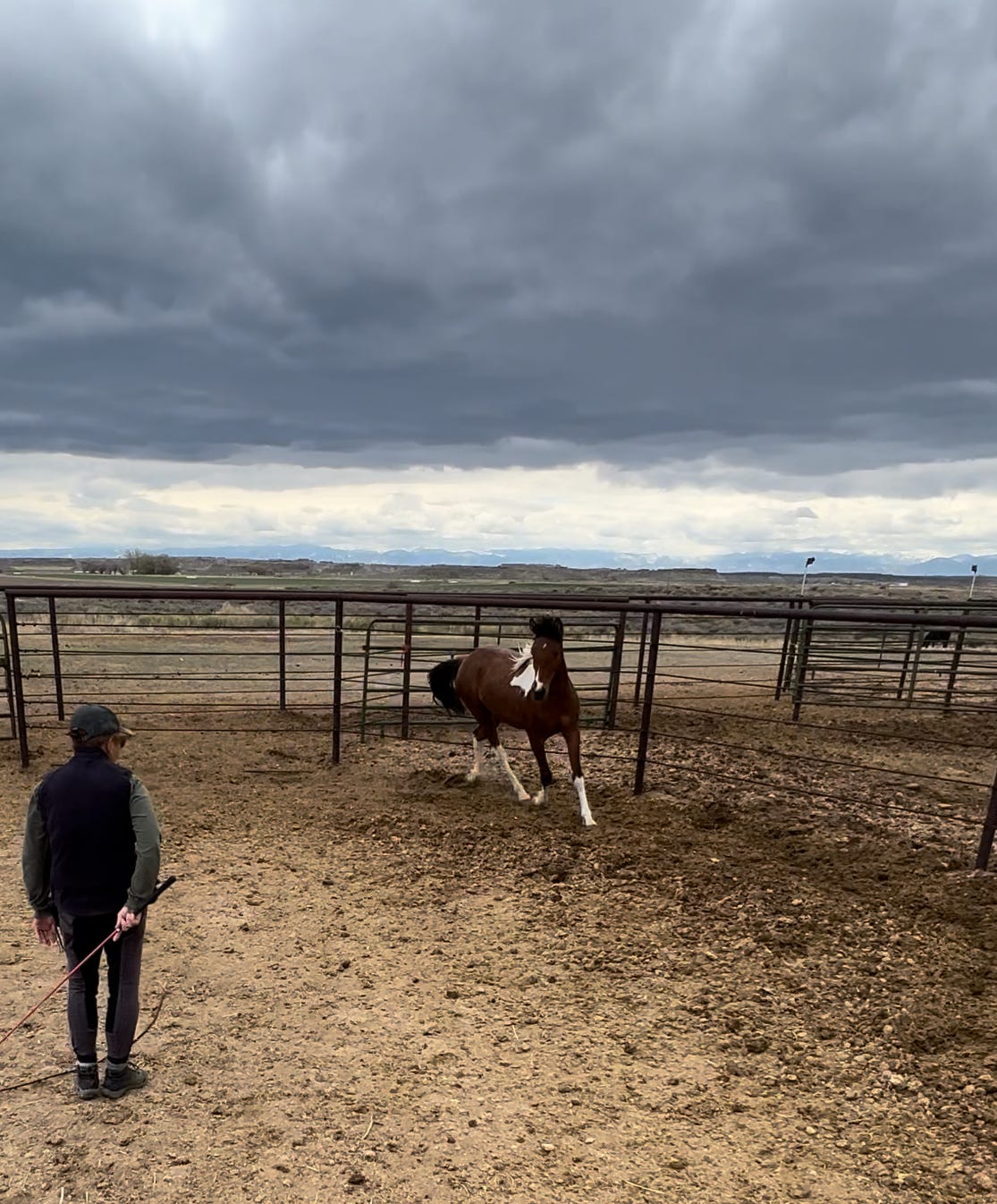When I watch round corral videos, I’m always reminded of the pitfalls and magic of the round corral.
The Pitfalls
The major pitfall of a round corral is that it is a trap for horses from which they can’t escape. As great a place as it can be for training, it can also be a claustrophobic, terrifying place for a horse to be. Learning our horses’ thresholds of reaction vs. response so we know when our body language suggests rather than screams at them is an important part of relationship based horsemanship. Some other pitfalls related to the round corral are:
It limits a horse’s choices. This can make the horse feel even more claustrophobic.
It’s easy to get overly repetitive inside the round corral leading horses to feel that what happens in the round corral is drudgery.
Overdoing tasks, especially circles. Young and old horses can be physically damaged by doing this. Your relationship with your horse can be damaged by doing this.
Some things that we can look for that indicate that a horse is not connected to us, and is uncomfortable in the round corral:
The horse’s neck is bent to the outside of the round corral.
The horse is snorting.
The horse’s head is held high in the air, regardless of gait.
The horse’s body is stiff and tight.
The horse is focused on things outside the corral.
The horse is reactive vs. responsive.
When asking for the canter (lope), the horse crossfires (the front and hind legs are not in sync).
It’s important to remember that the round corral amplifies our cues, like a bell rung inside vs. outside a theater. It’s extremely important to assess your horse’s state of mind because the round corral can allow humans to be overly forceful in pressuring horses. We must be observant and aware of how a horse is responding to our cues.
Learning to use your imagination when training your horse is no where as important as when you’re in the round corral. The goal is to keep your horse relaxed and engaged.
Take plenty of quick breaks, especially early on in a horse’s training. Come with a plan, but be flexible enough to change the plan if needed. When you get improvement with any given task, move on to something else and come back to the original task if you’re looking for more.
The round corral can bring out the best and the worst of a horse’s personality. You can accelerate your horse learning by designing your round corral sessions to maximize your horses strengths and whittle away at their weaknesses. See my articles about this here, here, and here.
The Magic
When a horse is calm and in a learning frame of mind, they can behave from willingness instead of instinct. They then can pay attention to our body language and move down the path of learning to be a partner. When we put our horse’s positive frame of mind at the top of our training priorities, we can utilize the round corral’s usefulness and its magic.
Here are some advantages to a round corral:
It helps the horse to teach itself to shape its body in a properly biomechanical way.
It limits a horse’s choices. If the horse is relaxed, this helps them focus on you and that for which you’re asking.
It limits distractions.
The horse can come to know it’s time to focus when they are there with you.
When used at liberty, the round corral is a great test of communication, willingness, focus, and response.
All of these attributes can lead to some pretty magical interactions.

I was recently reviewing a video that was taken by my friend, Wendy Carpenter, many years ago with Maverick, when we were refining our liberty flying lead changes in a round corral.
One of the things I was most pleased about in that session was my very discreet use of cues and Maverick’s keen observation of my body language. Maverick also put a huge effort into doing what I asked. I was also impressed by Maverick’s ability to slow down, relax, and get more on his hindquarters exactly when I asked him to do so. Weighting his hindquarters made it easier for him to do the flying changes.
On the downside, Maverick was still more reactive than I would have liked in that video, and this was a big part of our future sessions. Eventually, he was able to get his flying changes in an even bigger space, which you can watch here: Maverick liberty flying changes - YouTube
I have been amazed on many occasions when one of my horses responded to what I believed was only a thought in my mind. Often, I realize I had cued them with my body language without realizing it, but sometimes I know they responded to my thought alone. Many of these magical moments have occurred in the round corral.
Think of the round corral as a tool. As with all tools, it can be used skillfully or inartfully, depending on the person using it. Round corral training is yet another important skill horsemen can use to build willingness, understanding, relationships, and skills in horses.
For more information about the amazing horses that have been and are being bred on the HAAP Farm, click here: HAAP farm web page.
If you have questions for me about any of my posts, please feel free to contact me at isabellefarmer@gmail.com or click here: HAAP Farm Facebook page.




